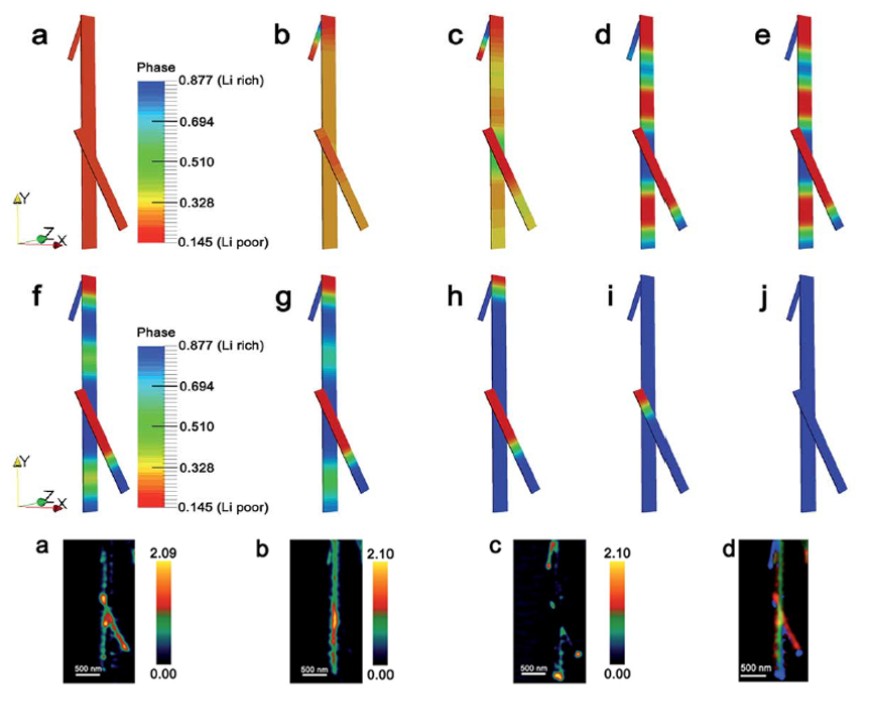Lithiation across interconnected V2O5 nanoparticle networks
New Publication in “Journal of Materials Chemistry A”
2017/08/31

Authors: Luis R. De Jesus, Ying Zhao, Gregory A. Horrocks, Justin L. Andrews, Peter Stein, Bai-Xiang Xu and Sarbajit Banerjee
Electrochemical reactions within Li-ion batteries occur far from equilibrium and are accompanied by considerable heterogeneity. Many electrode materials undergo phase transformations upon insertion of cations. The sequence and propagation of these phase transformations determine energy dissipation and the proportion of actively intercalating materials, which play a vital role in influencing characteristics such as cyclability, degradation, and hysteresis. The heterogeneity within electrode materials stems in large measure from local variations of structure, surface states, and position within the electrode; these factors are poorly understood given limited studies of local structure. Here, we show based on scanning transmission X-ray microscopy studies of Li-ion intercalation within interconnected V2O5 particle networks that interconnects between cathode particles strongly influence the transport of Li-ions and the resulting spatial propagation of phase transformations across the network. Considerable phase heterogeneity is observed across interfaces that are rationalized based on phase field models that suggest that the propagation of Li-rich domains occurs preferentially across a single particle instead of concurrent lithiation and nucleation of Li-rich domains across the entire network. Further phase heterogeneity arises from defects and secondary growth of Li-rich phases at nanowire tips. These findings suggest that mesoscale architectures can potentially be designed with appropriately positioned interconnects to maximize the proportion of actively intercalating regions and to ensure equilibration of local current densities.



